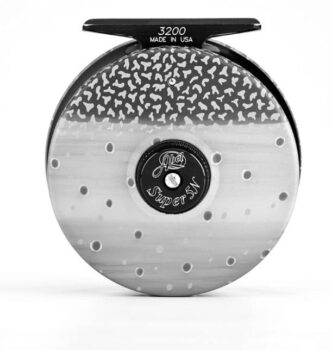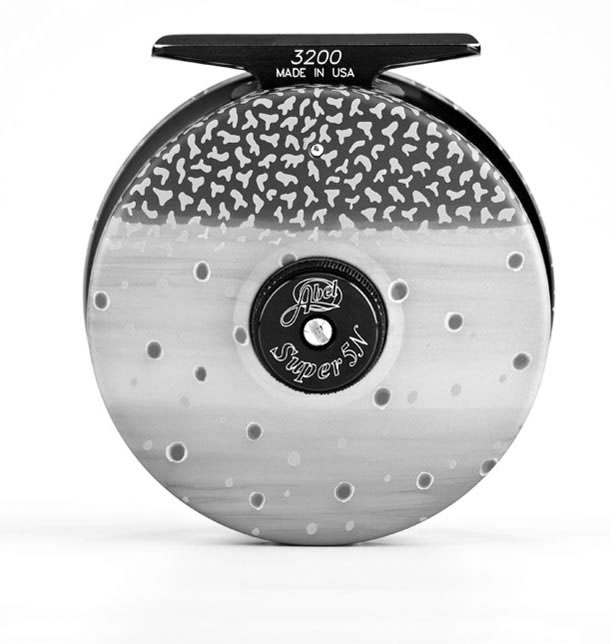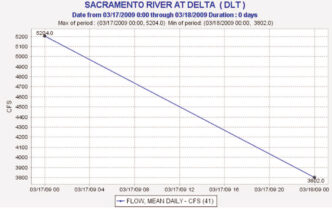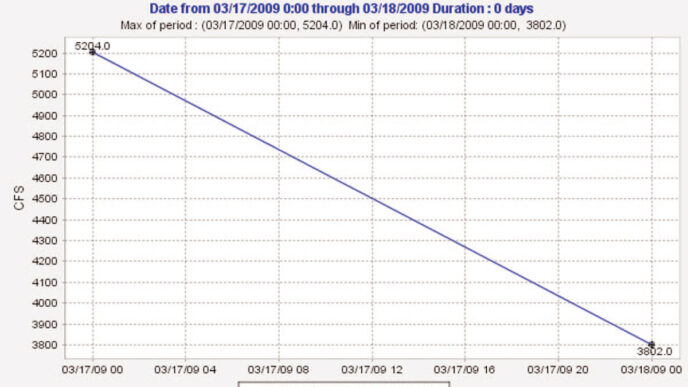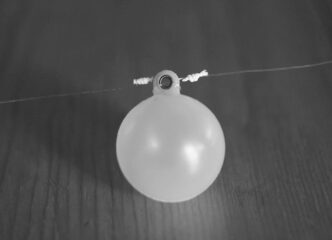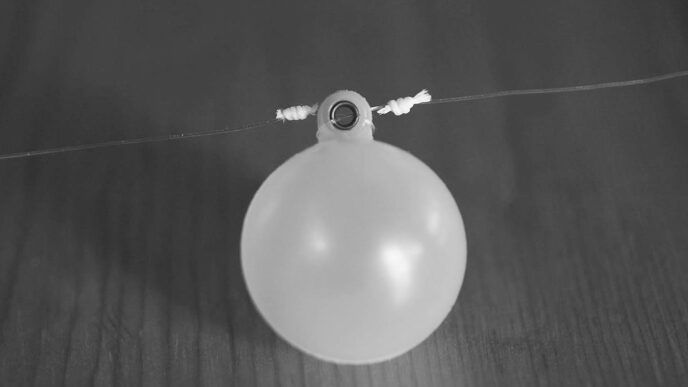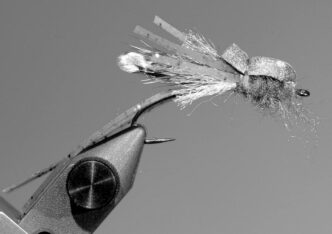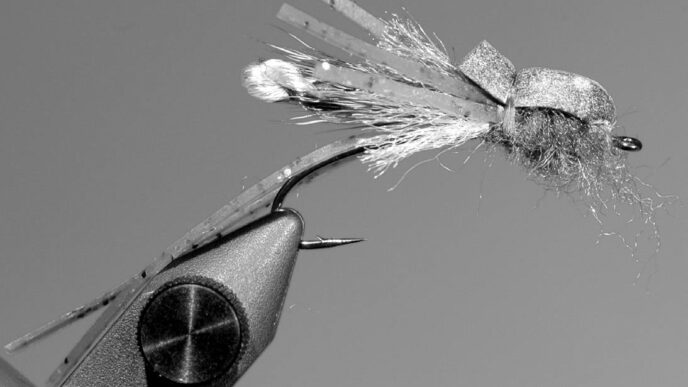In the previous issue, I promised to talk in the January/February issue about what was new in fly lines and reels at the Fly-Fishing Retailer World Trade Expo in Denver back in September. Well, here we go.
New Fly Lines
It used to be that choosing a fly line was one of the easiest decisions in fly fishing. Two companies accounted for 98 percent of the market. You went to the fly shop, which might only carry one brand, reconciled yourself to being either a Scientific Anglers person or a Cortland person (which might involve how you felt about peach versus ivory for floaters, or brown versus green for sinkers), chose a taper (weight-forward, double taper, shooting head), and bought the line. You were in and out in five minutes, unless you got sidetracked by the other stuff lying there in plain sight, reaching out tentacles for your wallet.
Today, fly-line choices have multiplied exponentially. There are specialty lines for just about anything that swims anywhere, and in addition to lines by Scientific Anglers and Cortland, there are offerings by RIO, Airflo, Orvis, Monic, and an increasing number of companies outside the United States, such as Guideline. And of course, the double-handed market reinvents itself every month or so, which adds considerably to the mix.
For 2010, Scientific Anglers probably offers the greatest number of new lines, although many of these are extensions of existing products or technologies. For example, saltwater anglers can now spool up clear-tip and intermediate weight-forward saltwater Sharkskins, and freshwater anglers now can find Sharkskin Streamer Express lines in versions from 150 grains to 400 grains. All are $99.95.
There is also the new Mastery Series (non-Sharkskin) Streamer Express — Long sinking and floating lines, developed in conjunction with streamer guru Kelly Galloup. The sinking version has a 30-foot, small-diameter, superfast-sinking head, followed by 20 feet of intermediate sinking line, which is integrated with a superslick floating running line. The idea here is that the sinking/intermediate transition lets you fish and stay deeper than a line in which the transition is directly from sinking to floating. The Mastery Streamer Express — Long floating line has the same long head and short front taper, which SA says allows both easier pickup when fishing large flies and easier mending once the line is in or on the water. Sinking versions are available in 200-grain and 250-grain versions intended for rods in the 5/6-weight and 6/7-weight ranges, respectively. Weight-forward floaters are available from 5-weights to 8-weights. All of them are $69.95.
Finally, there are new Mastery Series SA Streamer Express Short Head lines, with 26-foot rather than 30-foot heads and a slow-sinking running line. They’re offered in versions from 150 grains to 450 grains that should find use in both fresh and salt water. They’re $69.95, too.
Airflo has reworked the formula for their polyurethane coatings to enhance the suppleness of lines meant to be fished in most cold-water conditions. The Ultra Supple coating, built for fishing in a temperature range from 23 degrees to 78 degrees Farenheit, is now standard on the Ridge series of single-handed fly lines (Tactical Trout, Rangefinder Distance, Technical, and Impact models; $69.99 each) and on the company’s double-handed shooting-head range.
There are also two new Airflo lines in the double-handed lineup. The Speydicator ($79.99) is a specialty indicator line offered in versions from 360 grains to 570 grains, with a short head and long rear taper. It features Airflo’s low-stretch Ridge running line, which extends the entire line to 120 feet. The new Tactical Steelhead shooting heads ($59.99), at 39 feet, are longer than Airflo’s Scandi Compact head, have slightly wider tip diameters, removable floating tips (so you can switch to a sinking tip), and are available in versions from 390 grains to 660 grains.
RIO has two new single-handed lines and two new double-handed lines. The Trout LT line ($69.95) is a delicate-presentation trout line with a long front taper and an extended belly that helps in-the-air stability, mending, and roll casting. It’s offered in both weight-forward and double-taper configurations in the usual trout weights. The weight-forward lines change color from a light to a darker shade to give you an idea of where the optimal load point is (although of course that assumes there’s a similar optimal load point for different rods and different casters). RIO’s new Indicator line is quite the opposite in taper of Trout LT, with a large-diameter tip and short front taper designed to turn over whatever yarn or balloon you hang off your leader. Each Indicator line comes with a free RIO Indicator leader. Like the Trout LTs, the Indicator lines have the dual-tone color system.
RIO’s new Spey lines are the Skagit Flight Head series and the Skagit Short Head Series (both $49.95). Flight Heads have heavy back ends to load the rod deeply, in front of which are relatively long bellies and a short front taper for loop formation. They come in weights from 400 grains to 750 grains, range in length, depending on weight, from 24 feet to 32 feet, and are looped at both ends for a running line and tips.
The RIO Short Head series are ultrashort 20-footers, designed for Skagit-style casting with single-handed and switch rods between 9 feet and 11 feet in length. RIO Short Heads have loops at both ends for a running line and interchangeable tips and are available in weights from 275 grains to 525 grains. That should make them useful on a wide range of rods, including some pretty light ones.
Monic has no new lines for 2010, but has updated the polymer coating on their flagship Tropical series to take more environmental heat and provide a tougher finish, with more elongation. An added benefit, according to Monic, is even better core-to-coating adhesion.
Cortland has once again tweaked its decades-old 444 series of floating lines, which a good number of trout anglers still prefer to more recent offerings, and has come up with the 444 Classic Floating Whisper Taper. A new, more supple, but still durable coating is matched, in the weight-forward version, with an extralong 24-foot front taper for delicate presentation, followed by 8-foot-long belly and back tapers. Double-taper Whispers are also available and have 10-foot front tapers. Line color in both versions is cream, and Whispers are available in weight-forward line weights 2 through 8 and double-taper weights 2 through 7. Prices were not available at the time of this writing.
Orvis’s new lines include the Elixir Scandi Head lines ($72.00) for switch rods in versions from 295 grains to 420 grains, an introduction that probably has something to do with the new Orvis Helios switch rods. There’s also a Multitip Spey System ($159.00) that includes five looped tips for 7-weight through 11-weight rods, and an Easy Cast Spey floating line with a midlength belly for 7-weight through 10-weight rods.
New Fly Reels
There are certainly a couple of functionally different new fly reels coming out in 2010, but we’re also looking at the continuation of another trend. Abel started it, first with brightly colored anodizing, then by cooking up a way for artists to place images on reels. So for 2010, Abel will sell you a reel anodized in one of 15 colors or one featuring the scale pattern of any of 21 game fish (including carp) or with the silhouette of any of 17 game fish (no carp, no pike, but you can order shad), or one in camo, or with the Australian flag, or a skull and crossbones, or Tim Borski’s bonefish art, or the abstract art of Derek de Young. Phew! You can even have the reel bead blasted to a suede-like low glare finish or have the reel handle anodized specially. Phew! Word is that over half of Abel’s production gets some sort of color or artistic treatment. Substantively speaking, Abel also added three new Super Series models that will handle line weights 4 through 7 ($450.00 to $470.00). Of course, an artistic graphic aluminum handle will bump the price up by $90.00, but who’s counting?
Hatch Outdoors stepped up to the artistic plate with a number of limited-edition engraved fly reels. In this case, you’ll be getting in-the-round murals relief-engraved by California artist Lance Marshall Boen. It won’t be cheap, but is the truly beautiful ever that? A Hatch 12 Plus with Boen’s Big Game Bluewater engraving will set you back $2,625.00. A Hatch 3 Plus model with Waters Bounty engraving is only $1,200.00. Limited-edition 5-weight, 7-weight, and 9-weight reels come in somewhere in between.
Staying on the spendy side of the street, Waterworks-Lamson introduced a reel I saw in prototype a year ago. The Lamson Vanquish ($799.00 to $899.00) is an all-out big-game model, billed as “the ultimate blue water weapon.” It’s a large arbor reel built around a beefed up, fully sealed version of Lamson’s unique conical drag, with a tandem roller clutch. The result is an almost doubling of the braking pressure over Lamson’s ULA Force model. To support that truck-stopping beef, Lamson developed a new, stiffer frame with an integrally machined reel foot. Spools feature a deep-V profile for efficient line storage and pickup, and the reel is coated with Lamson’s Hard Alox finish in a nice gray/brown color. Offered in 8-weight, 10-weight, and 12-weight models, the V10 and V12 come in either a ported, closed-face version or a lighter open-spoke design. Some traditionalists don’t necessarily care for the high-tech appearance of Lamson-Waterworks’ reels, but you’d have to be truly witless not to appreciate their reputation for performance.
Hardy has extended reintroduction of its “Heritage” fly reels to include a handful of models that should keep both bamboo and Spey anglers reaching for the plastic. New for 2010 are reissued St. George model trout reels in 2-9/16-inch and 3-inch sizes. While the new models won’t have the same cachet among collectors as the original small diameter St. Georges, the new offerings are arguably improvements in that they’re computer machined, anodized rather than leaded or enameled, while featuring the same spool look, drag and agate line guards as the originals. If $795.00 seems high, reflect on the fact that last year’s production of trout-sized Hardy Perfects, at $900.00, sold out in the blink of an eye.

On the larger end of the spectrum, new Salmon Perfects, built with all the advantages of modern materials and machining, are now available in 4-inch and 4-1⁄4inch sizes, at $1,100.00 and $1,200.00, respectively. And for the historical as well as traditional among the Spey crowd, there’s a new 4-1⁄4-inch salmon-sized St. George: the Hotspur model. The reel gets its name from Harry “Hotspur” Percy, who died at the battle of Shrewsbury in 1401 rebelling against Henry IV, and whose home and castle are near Hardy’s home at Alnwick in Northumberland. The new Hotspur fly reel, one assumes, won’t have Harry’s hot temper, and will rest comfortably on your Spey rods, paying out gobs of line with a satisfying series of clicks. Hotspur St. George models are offered in a choice of mid arbor (per the original) and standard arbor versions, on the same frame. The price is $950.00, plus $399.00 for an extra spool of either size.
Sage hasn’t added to its extensive line of reels, but is offering them in additional colors for 2010. The top-line 6000 series ($600.00 to $700.00) is now available in a classy all-platinum version, as well as with a black frame and platinum spool. The 4500 series ($375.00 to $425.00) is now available in bronze as well as black/platinum. And the carbon-fiber spool 3800 series ($260.00 to $300.00), previously just black with platinum spools, is now also offered with a hot-looking bright blaze frame.
Orvis has introduced a new sealed-drag reel with increased braking power. The drag on the new Mirage ($425.00 to $495.00), a stacked design based on fighter-jet brake systems, uses floating carbon-fiber discs against stainless steel. Orvis says it creates 15 pounds of “dead pull stopping power.” Mirage reels are anodized gold and boast quick-release spools and easy left-hand-right-hand conversion at a price that’s relatively low for a reel in this class. Four sizes are currently available, the IV for 7-to-9-weight lines, the V for 9-to-11-weight lines, the VI for 11-to-13-weight, and the VII for 12-to-15-weights. Lighter models will eventually be offered, should you need to put the brakes to a fight-crazed brookie or smallmouth.
Ross’s newest offering is the Evolution LT ($245.00 to $315.00), a lighter, improved version of the discontinued Evolution, available in six models for line weights 1 through 9. The drag on the reel is a Delrin-to-aluminum conical friction system, but I’ve not yet taken one apart to see how it compares with the conical drag on Lamsons. LTs are highly machined, with lots of spokes and open space. From the spool side, they look quite a lot like the Torque reels that Boni Galvan cooked up a bunch of years ago. The LTs may gain the same loyal following.

The modest end of the fly-reel price spectrum — I’m reluctant to say “cheap,” since darn near nothing in fly fishing is cheap — has seen a lot of activity lately, and for good reason. Imported Chinese-made and Korean-made reels have improved in smoothness of operation, reliability, and durability. If money is tight and you need another reel, ask yourself whether you’d rather be in your living room playing with something that cost a bundle or on a bonefish flat with a probably serviceable reel that didn’t. Consider, while you ponder, that thousands of stripers, steelhead, salmon, and even tarpon have been taken on Pflueger Medalists — not exactly the paragon of close tolerances and fish-stopping power — before disc-drag reels became widely available. With that happy thought in mind, let’s note that both Redington and Temple Fork Outfitters have both developed new fly reels that are available at surprisingly low prices.
Redington’s Drift models ($125.00) are fully machined reels with adjustable click-and-pawl drags. Midarbor designs, they come in black and titanium colors in three sizes for line weights 2 through 6.
Redington’s inexpensive big-fish fly reel is the Surge ($100.00), available only in black. The frame and spool are all aluminum, though I’m guessing neither is machined. Whatever the construction, it has a Rulon drag that’s billed as having excellent stopping power, and the spools can be quickly changed. The few reports I’ve read have been positive. For a hundred bucks, it’s a lot of reel.
TFO’s new Prism Cast ($84.95 to $94.95) is essentially a cast version of the machined Prism, and it costs 20 percent less. It has a cork disc drag, a one-way clutch bearing for instant drag engagement, easy right-hand-left-hand conversion, and quick-change spools. The reels look and feel good, and at the price they’re another bargain.
Next issue, we’ll cover waders, wading boots, and other stuff.



